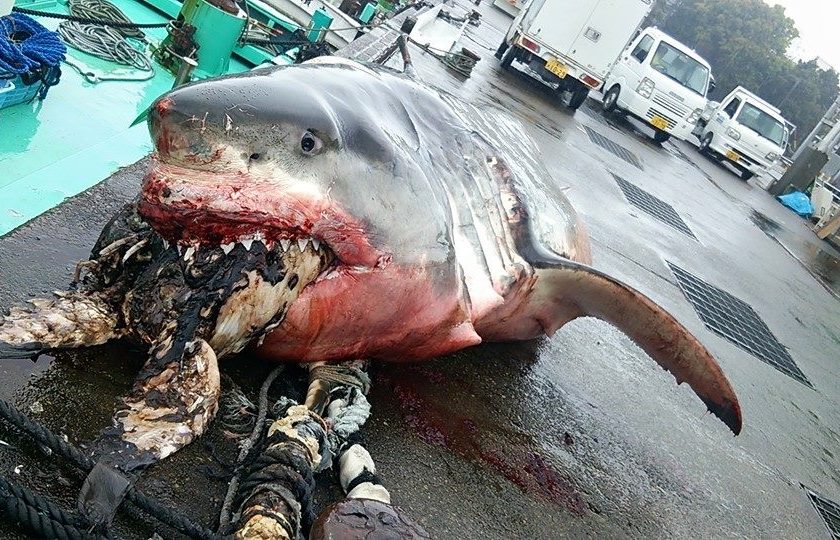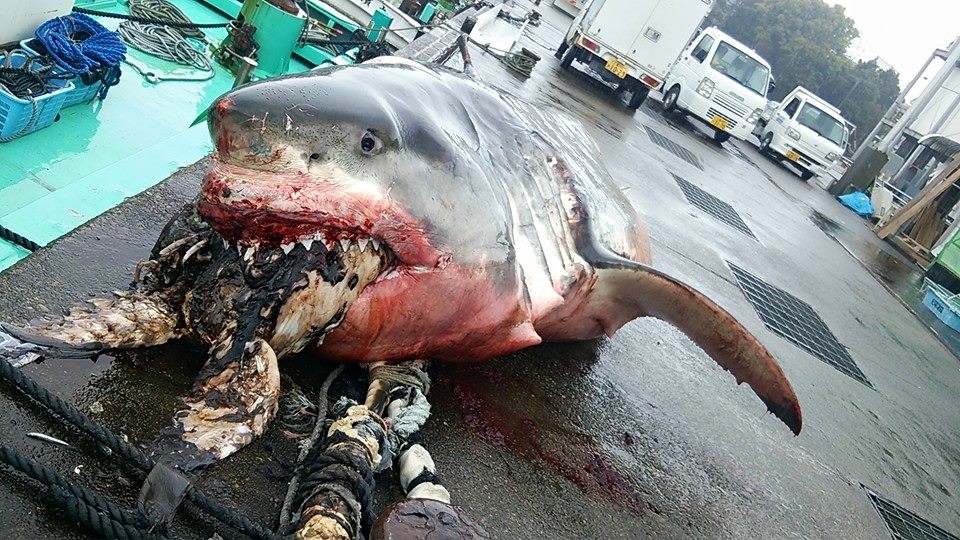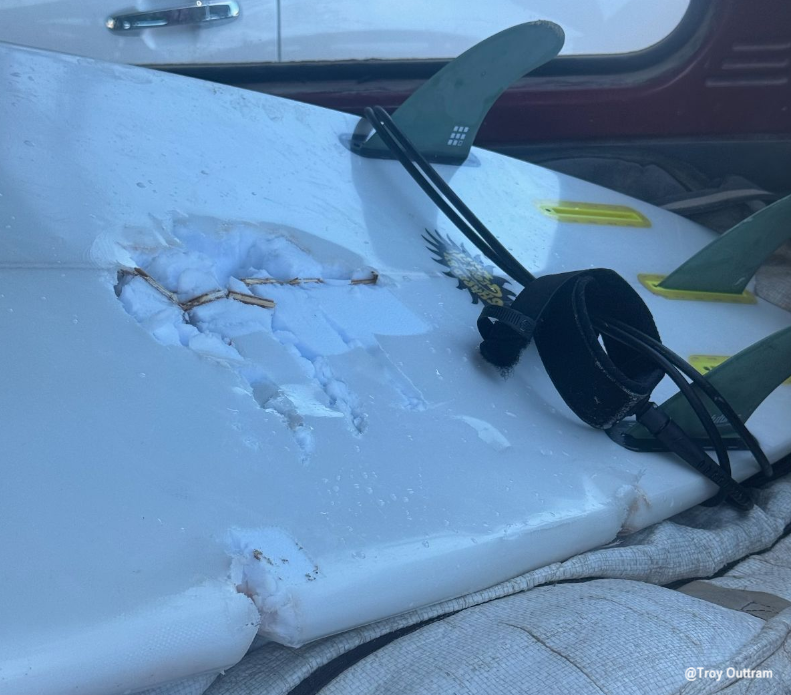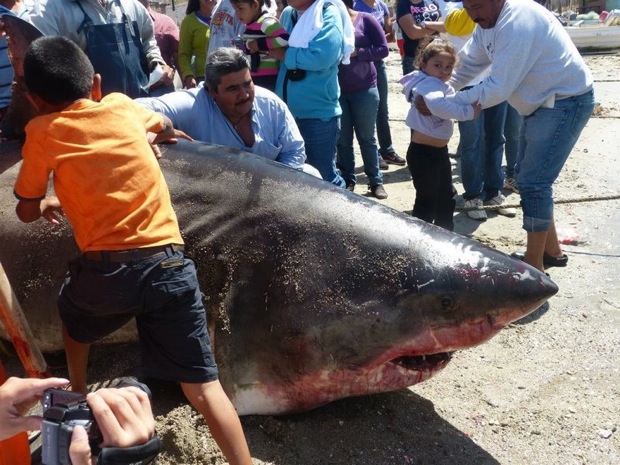Photos of a great white shark that supposedly choked on a sea turtle have been floating around the web for the last six years.
In 2019 several of the photos went viral after commercial fisherman Greg Veal shared them in a Facebook group. The commercial fisherman lives in Japan and confirms the photos were taken in 2015 in Mie, Japan. At that time, several Japanese blogs shared the photos along with more detailed info.
The estimated 19-foot (6m) great white shark was brought to the Udono Port August 7, 2015, in Kiho Town, Mie Prefecture, Wakayama. It was caught in netting about 2 miles (4km) off the coast of Atawa by the Atawa Oshki Fisheries Production Association. The photos were taken by a local fisherman from the Udono Port.
Veal offered more information on how the shark may have been inadvertently caught.
“Each little fishing port along the coast has fixed net fish traps. These are basically long (1km) net lines that act as fences to herd fish into the end of the trap/net,” Veal told Tracking Sharks.
“The nets are set in relatively shallow water, from 10- to 30-fathom. There is little bycatch, unwanted species are bailed out of the net alive and released,” Veal said.
The big question, did the shark actually choke on a sea turtle? Most likely, no. Of course, anything is possible, but white sharks have an amazing bite radius and their teeth are designed to cut and their powerful jaws can crush both shell and bone.
There is little doubt that the shark was caught in a net, which could give us clues as to possible scenarios.
“The local area is near sea turtle spawning beaches,” Veal said while noting sea turtles are a protected species. “The shark most likely grabbed a dead turtle, swam into the net, and asphyxiated.

White sharks have been known to consume turtles; however, turtles are not easily consumed. When threatened, they will turn on their side and keep their backs toward predators. Not only does the hard-shell offer protection, but it also makes the turtle much wider and harder to grasp.
While it is plausible that the shark did attempt to consume the turtle as the turtle carcass does appear to be somewhat decomposed. Sharks have the ability to push their stomachs out of their mouths in what scientists call gastric eversion.
Not only will sharks do this to clean out their stomachs or when stressed, but they will also perform the gastric eversion when chased by larger sharks. Emptying the stomach contents make them lighter and it also leaves the undigested food in the water, which could distract a hungry predator.
It could be the white shark was stressed after being captured in the net and attempted to empty its belly but was unable to fully evacuate the sea turtle before dying. However, one would think there should be more damage to the body of the turtle, such as a crushed shell.
Another possibility is both the decomposing turtle and shark were in the same net and the shark inadvertently grabbed the turtle which became lodged in the shark’s mouth.
While there is no way to confirm how the shark actually died, we know that no one was happy about it. Veal reported that local fisherman were disappointed in seeing the dead shark.



